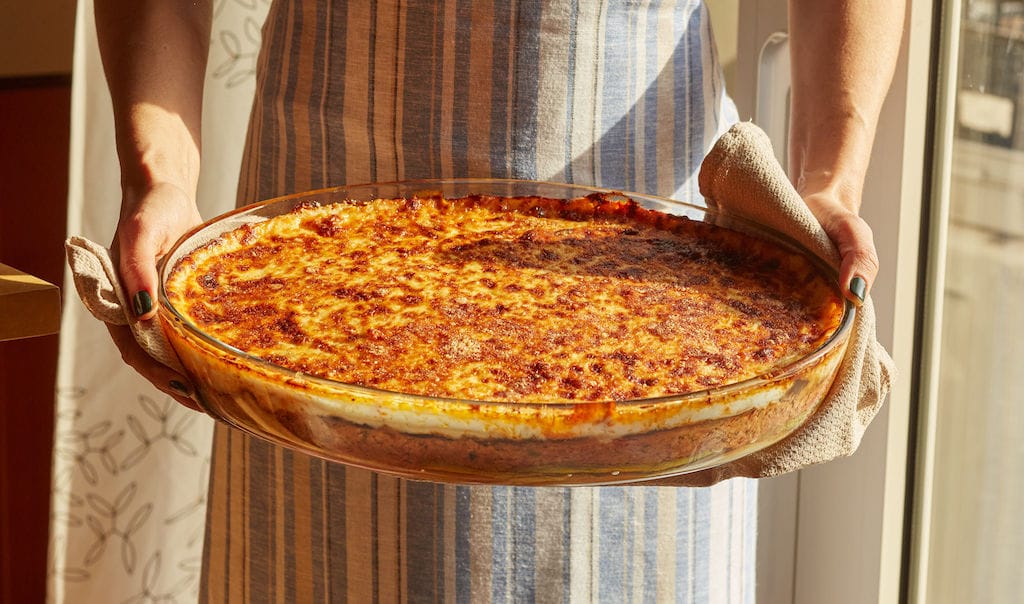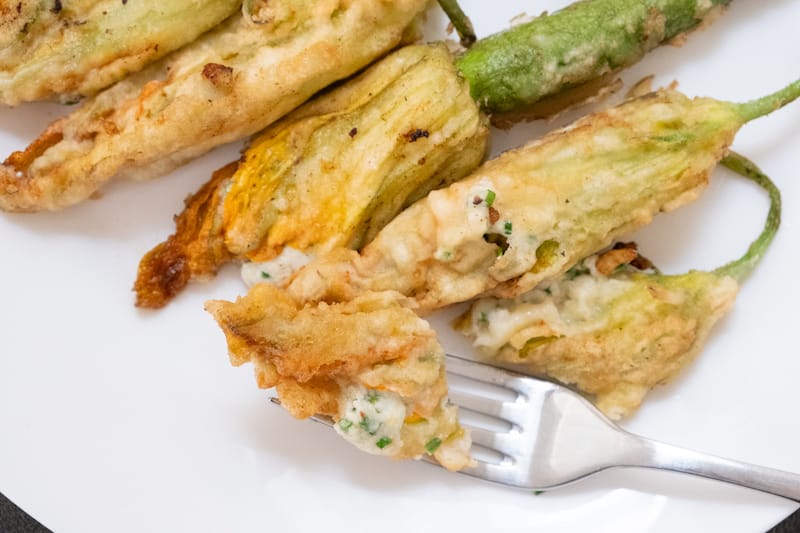Editor’s note: Longtime CB contributor Carolina Doriti was born in Athens, where she grew up in a family with a long culinary tradition. Having studied arts management, she pursued a career as a curator but quickly set her museum work aside to follow her true passion: cooking! Since then, along with her work as CB’s Athens bureau chief, Carolina has been working as a chef, restaurant consultant and food stylist. She is also the Culinary Producer of My Greek Table, a TV series on Greek gastronomy, broadcast on PBS across the US. She has appeared on various cooking shows on Greek and Spanish TV and gives cooking classes and workshops in Athens. Salt of the Earth is her first cookbook.
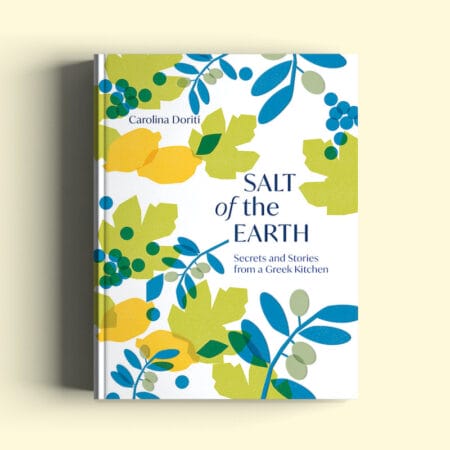
How did Salt of the Earth come about?
Writing a cookbook was something I had in the back of my mind since I was about 12-13 years old. That’s when I got a detention at school for not paying attention in math class and I was sent to spend the day at the school library. There were so many kinds of books in there but I was fascinated with the cookbooks, most of which were in English (I went to an American school in Athens). That’s when I started writing down recipes and keeping notes on cooking. I got a huge special notebook for this which I treasure and I still write in it. From that day on, I became a regular library visitor! It’s fun to see my changing handwriting in this notebook as I grew older and the kind of recipes I chose to write down. I dreamt this would eventually be the cookbook I would one day publish!
When I was in my late teens I urged my mom, a fantastic cook, to write a book and she did publish one in Greece back in the late 1990s. Watching my mom working and researching was definitely a huge inspiration, but I was in a different phase then; I had moved to the UK, I was studying different things, and food was something I mostly enjoyed while I was on my holidays in Greece.
In 2005 when started working professionally as a chef, I definitely knew I was going to write a book at some point, but I felt had to wait for the right moment to come and for me to mature as a cook. I started collecting recipes and I traveled in Greece quite a lot, always focused on learning more about the regional cuisines and the history behind recipes and cooking methods. When I started working with Culinary Backstreets, I realized there was very limited or misunderstood awareness about Greek cuisine abroad. That’s when I knew I had to write a book in English. I wanted to present Greek cuisine in a historical and authentic way, explain how it evolved throughout history and how different regional cuisines are shaped or stand out. In 2016, I started working with Diana Kochilas on her PBS series My Greek Table. That was also very mind-opening and I learned a lot through it. Even though I had the book idea ready, I always had to work so hard on other projects that I had no time to focus on my writing and my dream, really. It was actually Covid and the lockdowns that gave me the time I needed to put it together, work on the recipes, and actually focus on this project which had been paused for so long.

The book is uniquely organized into five sections: “Olive,” “Grain,” “Hive,” “Seed,” and “Vine.” How did you determine these as the chapters? Was it easy to break down the recipes and Greek cooking into these categories?
I wanted to present the cuisine historically, from ancient times until today, and show how the basic ingredients of this cuisine have been used throughout time. At the same time, I wanted the book to have a more original approach to chapters rather than using the classic “starters,” “salads,” “mains,” “desserts,” etc.
Ingredient-centered chapters gave me more room to talk about the history and explain the ingredients’ traditional (or in some cases also the modern) use in the cuisine. It was easier for me to explain it this way. The size of book I agreed on with publisher didn’t allow me to include everything I initially wanted to include, so cutting down the recipes or trying to fit them into chapters was quite challenging!
I especially loved the “Hive” chapter. Why dedicate a whole section of the book to bees? What is the importance of honey in Greek culture/cuisine?
I love it as well! And bees deserve whole books to themselves, not just a chapter! They are magic beings which I highly admire and, to be honest, one of the things on my “must-do list” is to properly get trained for beekeeping.
Honey has a prestigious place in the Greek kitchen and it is widely used in many ways in cooking and baking. It has historically been a primary sweetener in the Greek kitchen ever since ancient times and, of course, centuries before before sugar appeared on this side of the world. If I have to think of five or six staple ingredients in a Greek kitchen, honey is definitely one of them and, for me, it is as important as wine and olive oil in this cuisine.
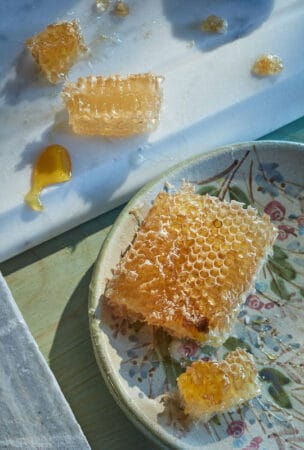
You write that your “joy of eating” comes from your grandfather, George. What are some of your food-related memories with him?
Hundreds of memories! My grandfather George was my best friend. He absolutely loved food, his job had to do with food, and aside from proper cooked dishes, he loved all these special, acquired-taste deli treats such as cured fish, fish roe, botargo, cured meats such as pastourma, salami, sausages and all sorts of cheeses. He introduced me to all of these from a very young age (as early as I can recall) and he always brought me food gifts that were “our secret,” passing them to me under the table – small packs of salami or other goodies (hiding them mainly from my grandmother who didn’t let him eat salty stuff for health reasons, even though in the end, she, who was so careful with what she ate, died a decade before my grandfather!). He always gave me sips from his wine or beer or ouzo to taste when I was a child (it was the eighties!). I tried offal and brains with him and I became an adventurous eater because of him; he always told me things like, “This is real food,” or “This is real pleasure,” or “I will teach you how to enjoy life” – he definitely knew how to enjoy life! He was the one who taught me how to properly clean a whole fish from the bones when I was just a young child and how to eat a fish’s head. Every time I eat lamb chops or fish I remember him telling me: “Eat it all, lick the bones and leave them sparkling clean on your plate – this is what people do who know how to eat.”
As warm weather comes to Athens, what’s one of your favorite start-of-spring recipes from the book?
Spring is so inspiring for cooking! So many beautiful ingredients come into season and it is my favorite time to shop at farmers markets. Recipes with greens and vine leaves are a must this season, and lemons are at their best as well. Any dish that combines greens and avgolemono (egg and lemon sauce) is an absolute celebration of spring, so recipes such as the Goat Fricassée with vine leaves and greens served in a rich and pleasantly tangy avgolemono sauce, are, for me, the ultimate Greek spring dishes. Milk desserts as well as recipes using fresh white cheese are also huge during spring, when milk is of good quality and is abundant. So, recipes such as galatopita and the traditional Honey Cheesecake are big during this season.
What’s one dish that you love that might be surprising to readers new to Greek cuisine and Greek cooking?
Probably the one I mention above (the Goat Fricassée). A recipe that borrows its name from French cuisine, but which is cooked in quite a different way from the French version in which they use cream or milk in the sauce and the meat used is browned in butter. Greek fricassee is a kind of souplike stew. It can be made with different kinds of meat or even fish, but the most classic takes are made with lamb or goat, pork, mushrooms, and even field snails. The most important element in a fricassee aside from a successful avgolemono are the greens and herbs used, which must be fresh. Also, few people know that pasta is huge in Greece and that there are several types of traditional pasta prepared around the different regions, particularly in south Greece, including the islands.
Recipe: Goat fricassée with vine leaves and greens
From Salt of the Earth by Carolina Doriti (Quadrille, £27) Photography © Manos Chatzikonstantis
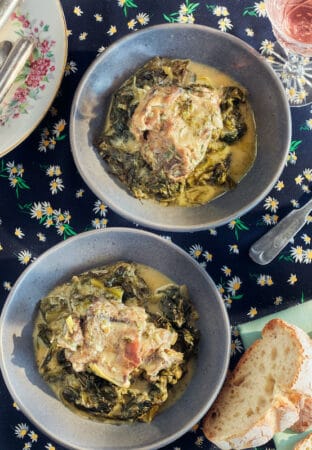
This dish is a celebration of spring and a great example of how traditional Greek cooking uses meat, which is more about adding flavour to a dish than actually consuming a large amount of protein; although this dish relies on the vegetables. Fricassée is a kind of stew usually prepared with green leaves – it can be wild edible weeds that grow locally every season, such as nettles or leaves, or chard, lettuce, spinach or vine leaves, along with plenty of chopped onions and herbs. Variations use other spring vegetables, such as artichokes. Although the name fricassée is borrowed from French cuisine (pieces of meat browned in butter, then cooked in stock and served in a white sauce with cream or milk and butter),the Greek take is quite different. Greek fricassée is most commonly prepared with lamb, goat, pork, rabbit or chicken. Other glorious versions of this recipe use mushrooms, field snails or fish, but my personal favourite is with goat or lamb. When the dish is ready, we prepare an egg and lemon sauce with its broth. The lemon really brings out the freshness and amazing flavours of this dish, which is really a cross between a stew and a soup. To properly enjoy it, serve it in a slightly deep plate with lots of broth (almost like a soup) and fresh crusty bread to dunk in it. This recipe is among my most favourite comforting and nutritious dishes, and I do urge you to make it if you are a lover of greens, lemons and herbs, as I am. I find it essential to use meat on the bone as it will make your dish far tastier and messier to eat, which is always a good thing!
SERVES 4
220g (7¾oz) vine leaves, fresh or from a jar
1.5kg (3lb 5oz) goat shoulder (or lamb shoulder) on the bone, cut into smaller pieces of about 100–130g/3½–4½oz) – ask your butcher to do this for you
50ml (2fl oz) olive oil
1 onion, chopped
1 leek, including the green part, chopped
5–6 spring onions (scallions), including the green part, roughly chopped
1 garlic clove, quartered
100ml (3½fl oz) dry white wine
1 liter (34fl oz) warm vegetable stock
380g (13½oz) chard, trimmed and roughly chopped
250g (9oz) lettuce, roughly chopped
8 tbsp roughly chopped dill
5 tbsp mint leaves, roughly chopped
1 tsp cornflour (cornstarch)
80ml (3fl oz) lemon juice (about 1 lemon)
2 eggs
Sea salt and freshly ground black pepper
If using vine leaves from a jar, drain and rinse them.
Fill a medium cooking pot halfway up with water and place over a medium-high heat. When the water starts to boil, lower the heat to medium-low and add the vine leaves.
Gently simmer for 7–8 minutes (if you are using fresh leaves, 3–4 minutes should be enough). Drain, roughly chop and set aside. Season the goat with salt and pepper.
Place a wide, deep pan over a medium-high heat and add the olive oil. Once hot, add the goat pieces and gently brown on all sides. Remove the goat from the pan, place on a plate and set aside.
Bring the heat down to medium, add the remaining olive oil to the same pan and sauté the onion and leek until soft and glossy. Add the spring onions (scallions)and garlic, season with salt and pepper, then gently stir.
Return the meat to the pan and pour in the wine. Give it a few seconds, then pour in the warm stock. Cover with a well-fitting lid and simmer for 40–45 minutes until the meat feels tender and cooked.
Meanwhile, prepare the chard and lettuce.
Place the leaves in a colander and gently wilt them by pouring boiling water over them.Remove the lid from the cooking pan and add the vine leaves. Simmer, uncovered, for another 10 minutes, then add the chard, lettuce, dill and mint. Gently mix them into the simmering broth. Season with a little salt to taste. Cover again with the lid and let it simmer for another 10–15 minutes.
Ladle about 200ml (7fl oz) of cooking broth from the pot into a jug (pitcher) or cup. In a small bowl, mix the cornflour (cornstarch) into the lemon juice until it dissolves.
Separate the eggs. Whisk the egg whites to a light meringue (not too stiff). Whisk in the egg yolks until combined, then gradually start adding the lemon juice, whisking constantly. The result should be light and frothy. Slowly pour the hot broth into the egg and lemon mix, again whisking constantly (this way the temperature of the eggs increases enough to mix the sauce into the pot without curdling). Don’t worry if there are pieces of onion or dill in there, it will all go back into the pot anyway. Pour it into the pot and gently shake it to mix in the sauce. Place back over a medium-low heat and bring to a simmer, then gently simmer over a very low heat for 2–3 minutes until the sauce thickens a bit and the flavors just combine.
 July 17, 2024 Recipe
July 17, 2024 Recipe
Back in the day, according to legend, a man named Köpoğlu spent all his money on rakı, […] Posted in Istanbul July 4, 2024 Recipe
July 4, 2024 Recipe
Summer markets in Marseille come alive, bathed in a colorful, brilliant bounty when […] Posted in Marseille June 25, 2024 Recipe
June 25, 2024 Recipe
We’re in Os Papagaios, the restaurant Joaquim Saragga oversees in Lisbon’s Arroios […] Posted in Lisbon
Published on April 12, 2023
Related stories
July 17, 2024
Istanbul | By Lian Penso Benbasat
IstanbulBack in the day, according to legend, a man named Köpoğlu spent all his money on rakı, the Turkish spirit made from grapes and anise, and was left with no money to buy food. Hungry, pockets empty, he went home and grabbed a couple of eggplants, some tomatoes and garlic from his garden and threw…
July 4, 2024
MarseilleSummer markets in Marseille come alive, bathed in a colorful, brilliant bounty when fruits and vegetables are in their prime. There are over 25 open markets in Marseille and, every Saturday, our mornings are booked. We set out to one of our neighborhood favorites, the market at Place Sébastopol in the town center, to search…
June 25, 2024
LisbonWe’re in Os Papagaios, the restaurant Joaquim Saragga oversees in Lisbon’s Arroios neighborhood, where we’ve asked him to show us how to make one of Lisbon’s more iconic dishes: ervilhas guisadas, peas braised with Portuguese sausages, typically crowned with poached eggs. Come spring, Portugal revels in green-hued produce: fava beans, asparagus, artichoke, spinach and other…







































